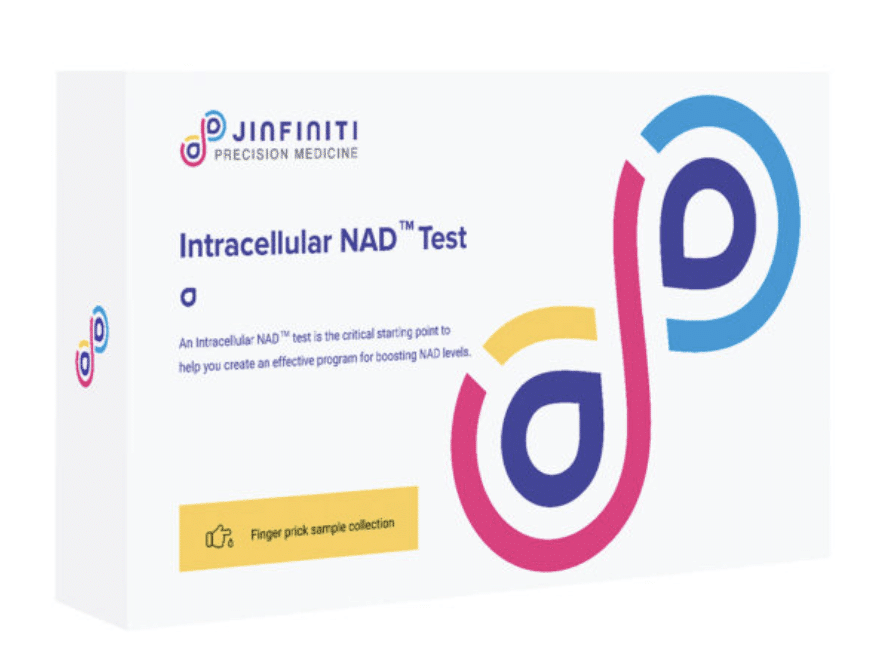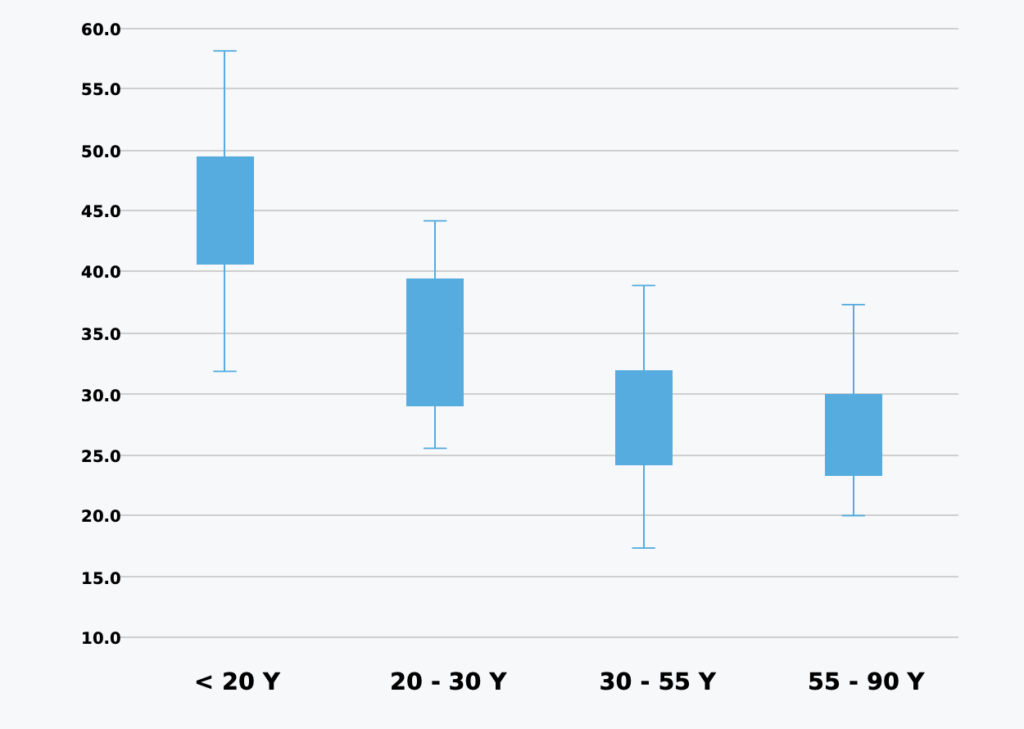NAD And NMN Testing – 2nd Tier Supplement
Now that you’ve had great results, here is the 2nd phase to your therapy.
Before we begin, please watch this 3 minute short clip with the founders of MHI explaining the IMPORTANCE behind WHY you should test your NAD levels prior to taking any form of NAD supplements and WHAT you need to know about the confusion behind NAD, NMN, Niacinamide, and Niacin. Which one should you be taking?

There is a 3 step process for your body to make NAD and get it into your cells. Here are the steps and what you need to know.
Cellular location of NAD: Circulating vs Intracellular
4TH STEP PRECURSOR “NAM” – niacinamide or nicotinamide – is a form of vitamin B3 found in food and used as a dietary supplement and medication. NAM’s could cause nausea, vomiting, and other gastrointestinal symptoms, as well as headache, fatigue, dizziness, and liver toxicity. From niacinamide or nicotinamide, we make nicotinamide riboside.
3RD STEP PRECURSOR “B3” – nicotinic acid or niacin studies show that they can increase HDL cholesterol and lower LDL cholesterol and triglycerides. It is also used to prevent and treat niacin deficiency (pellagra). Niacin deficiency may result from certain medical conditions (such as alcohol abuse, malabsorption syndrome, Hartnup disease), poor diet, or long-term use of certain medications (such as isoniazid). From nicotinic acid or niacin, we make “NR” nicotinamide riboside.
2ND STEP PRECURSOR “NR” – NR or nicotinamide riboside can help raise low NAD+ levels. From NR, we make nicotinamide mononucleotide.
1ST STEP PRECURSOR “NMN” – NMN or nicotinamide mononucleotide is a nucleotide derived from nicotinamide riboside. From NMN, we make NAD or nicotinamide adenine dinucleotide, a coenzyme central to metabolism and the FINAL molecule needed for cellular function! In other words, NAD is the molecule you need, BUT you CANNOT TAKE NAD because the molecule itself is TOO BIG to make it through the cellular membrane of the cell, so which one do I need to take? NMN is the route to take and here is why!
What Is NAD & Why Do The Levels Matter
NAD deficiencies are involved in six out of nine hallmarks of aging. Sub-optimal NAD levels increase the risk of age-related diseases such as stroke, heart disease, diabetes, kidney, neurodegenerative and infectious diseases. Supplementation, diet, and exercise are the best ways to boost NAD levels.
The Six Hallmarks Of Aging Affected By Sub-Optimal NAD Levels
Is a change that does not affect the DNA sequence but results in a change in gene expression. Studies have shown that elevating NAD levels can improve this epigenetic alteration & increase telomere length. NAD is also essential for many proteins’ functions in regulating gene expression.
Proteostasis is the ability of a cell to make stable, functioning proteins. The failure of the cell’s protein-building machinery and the accumulation of misfolded proteins is one of the root causes of age-related diseases, including Alzheimer’s.
Mitochondria generate energy in the form of the ATP molecule via the Krebs cycle and oxidative phosphorylation. These processes are called respiration and produce free radicals that can harm the cell. As we age, our mitochondria become dysfunctional by producing less ATP and more free radicals. The mitochondria stop working as well as they should due to disease or other conditions. Many conditions can lead to secondary mitochondrial dysfunction and affect diseases like Alzheimer’s.
Senescent cells are zombie-like cells that stop dividing and do not function normally. While senescence plays some crucial roles in normal physiology, increased senescence, as observed in many patients with diseases and people with old age, is harmful because senescent cells secrete large amounts of pro-inflammatory molecules and contribute to many age-related diseases.
It is the process of growing old. Senescence is a process by which cells age and permanently stop dividing and won’t die! Over time, large numbers of senior (or senescent) cells can build up in tissues throughout the body, causing inflammation around its surrounding tissues and may signal tumor growth. Foxo4 is a senolytic peptide we offer, and this is a class of drug that selectively clears senescent cells. NAD, quercetin, and fisetin are senolytic molecules that also help rid of senescent cells.
Cells respond to the abundance of nutrients in the diet through different pathways. When nutrient sensing is deregulated, cells don’t respond well to nutrients which can lead to conditions such as insulin insensitivity. It is a cell’s ability to recognize and respond to fuel substrates such as glucose. Each type of fuel used by the cell requires an alternate pathway of utilization and accessory molecules. In order to conserve resources, a cell will only produce molecules that it needs at the time.
It is strictly defined as the cellular responses associated with restoring damaged DNA to normal base-pair sequence and structure.
Think “Healthspan” Not “Lifespan”

How Did “Jinfinity Precision Medicine” Intracellular NAD Testing Develop Their Optimal Baseline For NAD Levels

There’s never been a way to measure NAD efficiently and accurately until now. The 25th percentile of NAD in their studied age group is 40μM (micromole), meaning that 75% of teenagers have NAD levels greater than 40μM. Therefore, we set the lower end of the optimum range at 40μM, the minimum level one should try to achieve for healthy longevity. If you are in the optimum range and there is no significant change in lifestyle, nutrition, health status, and NAD intervention strategies, you may consider taking the test again in 3-6 months. If your intracellular NAD is not within a healthy range, consider retaking the test within 2-4 weeks after you’ve implemented steps to increase your NAD levels. Most NAD-boosting strategies should raise your NAD levels within 2-4 weeks. Remember that you may need to try multiple methods until you find one that works for you. Repeated testing is the only way to measure progress towards your personal goal.
Vital Points To Know About NAD’S Importance & Role In Our Bodies
NAD is an essential molecule for maintaining life. It is found in every cell in your body; without it, you would be dead within 30 seconds.
NAD is a coenzyme found in all living cells and is essential to life because it catalyzes reactions for more than 400 enzymes, including those involved in producing cellular energy (ATP).
NAD plays an essential role in six hallmarks of aging: DNA repair, epigenetic alteration, loss of proteostasis, mitochondrial dysfunction, cellular senescence, and deregulated nutrient sensing.
NAD declines with age, about 50% by the time we are 40-50 years old, and lower NAD levels are linked to loss of function and vitality and many age-related diseases.
NAD levels in professional athletes may decrease as early as 30 years of age because NAD is depleted through vigorous exercise and overload of stress.
Distribution Of ICNAD Levels In Different Age Groups

How Do We Define The Optimum NAD Range
Because NAD levels decline with age, we define the lower end of the optimum range using the NAD values observed in teenagers.
The 25th percentile of NAD in this age group is 40μM (micromole), meaning that 75% of teenagers (under 20 years of age) had NAD baseline greater than 40μM.
Therefore, we set the lower end of the optimum range at 40μM, which is the minimum level that one should try to achieve for healthy longevity.
These values may vary in different people but the current research indicates that a level in the range of 40-75μM is a the OPTIMAL target.
It is not known whether levels above 100μM are more beneficial or detrimental.
NAD is NOT designed to be taken, it is designed to be PRODUCED NATURALLY by our bodies. That’s why we take precursors like NMN.
Benefits Of Optimal NAD
Boosting NAD levels has been shown to improve your health span.
Increased cellular energy (ATP). Improved endurance and strength.
Better prevention of age-related diseases, such as cardiovascular disease, cancer, diabetes, infectious diseases, neurodegenerative diseases, etc.
Improved circadian rhythm and intracellular calcium release during sleep.
Reduced oxidative stress.
Improved bone density.
Improved glucose intolerance and insulin sensitivity.
More remarkable ability to fight inflammation.
Improved brain-cell repair and protection.
Improved blood plasma lipid profiles.
Improved nerve-tissue generation.
Reduced cellular senescence.
Better immune health.
Improved DNA repair.
In this video, Miguel Bertonatti, shows with his results that NAD injectable is a marketing gimmick and a waste of your money. Click on the picture below to see this explained

